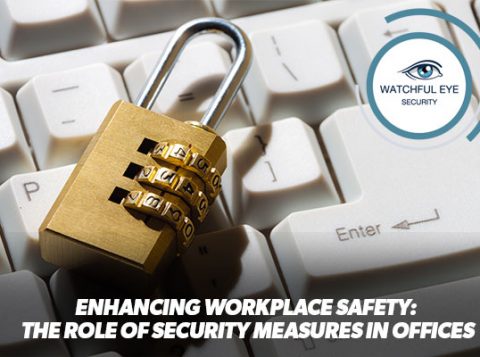
Proactive Security versus Reactive
A proactive security plan is about anticipation. Being in tuned with your business environment is critical to reading the signs and reacting accordingly. In security, anticipating possible threats is a crucial part of a security plan. This requires observation and investigation before a potential incident.
Functions of Proactive Security
A proactive security approach prevents major incidents before they happen. Preventative measures taken by a company anticipate potential situations and save the firm from experiencing devastating events that can lead to crippling losses from theft, fire or natural disaster. In addition, the physical manifestations of a proactive security system such as signs, cameras and passwords act as visible deterrents to thieves, vandals and hackers.
Examples of Proactive Security
Proactive security measures can range from a simple padlock to a sophisticated security system. They can be physical barriers, such as heavy doors or fireproof file cabinets, or electronic countermeasures, such as pressure sensors, surveillance cameras and key-card readers. Proactive security systems can be unmanned or can involve a full staff of security professionals. Many companies employ proactive security procedures on both their physical assets and their sensitive data, such as intellectual property and customer records.
Functions of Reactive Security
The reactive security approach calls for companies to respond to past and present threats, rather than anticipate future dangers. When the company falls victim to a threat, the owners determine the level of the threat, assess the amount of the damage and install measures to prevent such an event from reoccurring. Since no business can anticipate every possible threat and many do not have the resources to install proactive measures to counter unanticipated threats, many companies employ a reactive security approach.
Examples of Reactive Security
Security companies, such as those that offer 24-hour monitoring, function more as reactive agents than as proactive measures. These companies provide personnel to patrol a facility, monitor computer activity and watch live feeds from security cameras. In the event that a security incident occurs, they step in and attempt to stop the perpetrators or contact local law enforcement agencies. The visibility of security guards serves a proactive function, but often they act in a reactive capacity.
Which Is Better?
Because proactive and reactive security serves different functions, it’s not easy or fair to determine that one is better than the other. Ideally, your business should utilize a mix of the two. Think of proactive as your first line of defense to keeping burglars out and reactive as your rearguard that can aid you if your first line fails.
Sometimes, security can act as both types, such as alarm systems that may discourage robbers because they fear setting it off. Did you know that more than 50% of burglars would choose to stop their robbery if they saw an alarm or a physical security officer? This is even the case if the burglary was unplanned. The moral of the story is, no matter what you go with, you can’t go wrong.
Watchful eye security are experienced professionals who are able to assess and advise on security measures for your business. To get a free assessment and for friendly advice, please contact us.

























































































































































